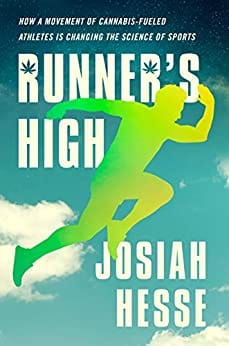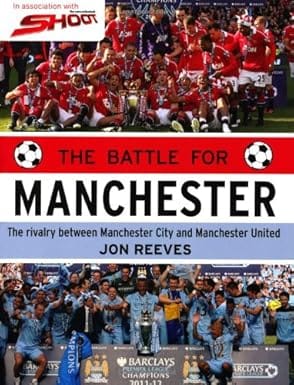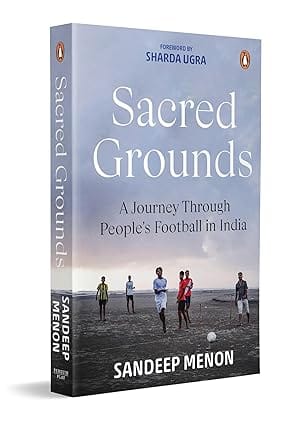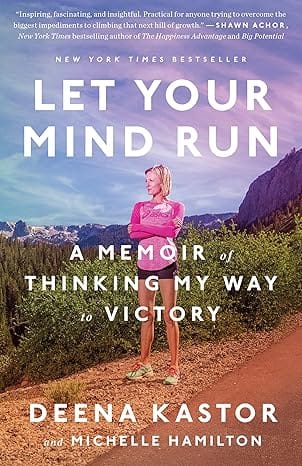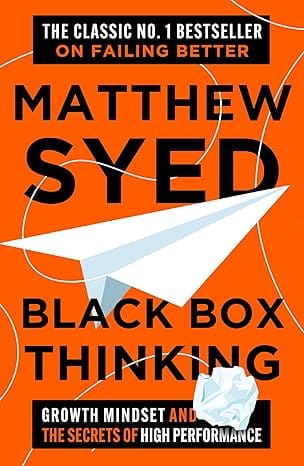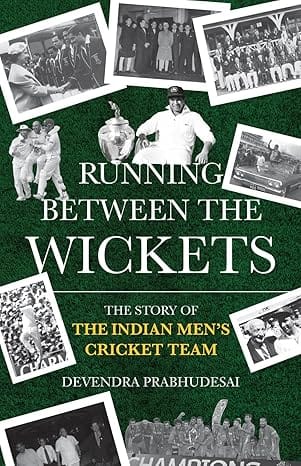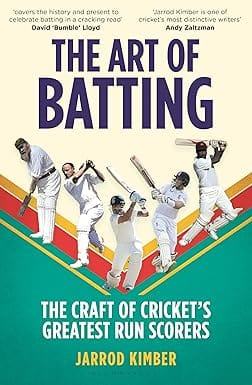- Non-ficton
- Non-ficton
- Contemporary Fiction
- Contemporary Fiction
- Children
- Children
- Comics & Graphic Novels
- Comics & Graphic Novels
- Non-Fiction
- Non-Fiction
- Fiction
- Fiction
Michael Pollan's How to Change Your Mind meets Christopher McDougall's Born to Run in this immersive, investigative look at the hidden culture of cannabis use among elite athletes (as well as weekend warriors)--and the surprising emerging science behind the elusive, exhilarating "runner's high" they all seek.
Pot makes exercise fun. The link between performance enhancement and cannabis has been an open secret for many years, so much so that with the wide-sweeping national legalization of cannabis, combining weed and working out has become the hottest new wellness trend.
Why, then, is there still a skewed perception around this leafy substance that it only produces the lazy, red-eyed stoner laid out on a couch somewhere, munching on junk food? In fact, scientists have conducted extensive research that uncovers the power of the "runner's high"--the true holy grail of aerobic activity that was long believed to be caused by endorphins. In an extraordinary reversal, scientists believe marijuana may actually be the key to getting more Americans off their phones and on to their feet.
In Runner's High, seasoned investigative journalist Josiah Hesse takes readers on a journey through the secret world of stoned athletes, describing astounding, cannabis-inspired physical and mental transformations, just like he experienced. From the economics of the $20 billion CBD market to the inherent inequalities in the enforcement of marijuana prohibition; from the mind-body connection behind the "runner's high" to the best way to make your own cannabis-infused power bars; Runner's High takes this groundbreaking science out of the lab and onto the trail, court, field, and pitch, fundamentally changing the way we think about exercise, recovery, and cannabis.
Review
“A stimulating survey of recent changing attitudes toward cannabis use in athletics . . . Hesse is at his best explaining the hypocrisy of criminalizing pot—while other potentially dangerous substances are legal—and how to use it responsibly. This enlightening deep-dive into the benefits of lighting up may even win over skeptics.” –Publishers Weekly
“[A] work of advocacy…An eye-opening and potentially mind-expanding read for runners and stoners alike, not to mention the culturally curious.” –Kirkus Reviews
“Masterful. . . A groundbreaking book on a cultural change that offers a perspective shift on exercising in general and an invitation to come out of the cannabis closet.” –Booklist
“Josiah Hesse has made a career of studying evolving subcultures — and his latest is still very much evolving. Runners High takes a nonfiction approach to the subject of cannabis and exercise, and the hidden culture of elite athletes who mingle them. Hesse, who credits weed for helping him become a long-distance runner, delves into the growing research and debates around the subject.” --Denver Post
“Runner's High, inspired by Michael Pollan’s narrative-driven science writing and Christopher McDougall’s Born to Run, digs into how athletes are using cannabis, the science behind the drug and the body’s response to exercise, the regulation of marijuana in sports, and the cultural assumptions about both athletes and cannabis users. Driven by his own stories and those of dozens of athletes plus plenty of science, he makes a compelling case for why cannabis makes exercise fun.” --Westword
“Runner’s High is passionate and insightful.” –Kansas City’s The Pitch
“A major, groundbreaking book on cannabis.” –High Times
"Endurance athletes have long known that the secret to excellence lies in finding joy in their effort. It just so happens that a little weed can turn a slog into pleasure. In his gonzo exploration of weed and athletics, Runner's High, Josiah Hesse illuminates a sub-culture of stoned runners who are outperforming their square peers, recovering faster, and managing chronic illness with the power of cannabis. If this book doesn't want you to take a pot gummy and head out on the trails, nothing will." –Scott Carney, author of What Doesn't Kill Us
“Bravo, Josiah Hesse, for writing such a readable, science-based, and enlightening book. Runner’s High clearly dispels the myth of cannabis as a performance-enhancing drug, while revealing its widespread use among elite athletes, simply because it makes exercise more fun! I really enjoyed the book.” –Dr. Rav Ivker, author of Cannabis for Chronic Pain
"It's past time for runners to be more open-minded about cannabis. Josiah has written a fun, informative insider's guide to the whys and hows of the topic. Highly recommended." –Scott Douglas, contributing writer for Runner's World and author of The Athlete's Guide to CBD
“Thank god for this book.” –Jessamyn Stanley, author of Every Body Yoga and Yoke
"The trend of fusing cannabis with fitness has been insanely popular for years. It's high time someone wrote a book about it, and Josiah Hesse is the guy for the job." –Avery Collins, top-ranked ultramarathoner
"Hesse is an earnest and authentic human being who writes well about what he knows with a passion that makes me envious. If I'm writing about the marijuana beat he'd be on my call list for sure." –Corey Hutchins, Colorado journalism reporter for Columbia Journalism Review --This text refers to the hardcover edition.
About the Author
--This text refers to the hardcover edition.
Excerpt. © Reprinted by permission. All rights reserved.
Chapter 1
Pot Makes Exercise Fun: The Secret Trend of Getting Lit and Fit
Long distance runner, what you standing there for? Get up, get off,
get out of the door.
-Grateful Dead, "Fire on the Mountain"
An Open Secret
It's 2016, six months after the Colfax Marathon, and I think I finally found a sporting event I belong at.
After discovering I perhaps wasn't the only person in the world who enjoyed running high, a quick Google search of the subject revealed there was actually an upcoming gathering of red-eyed athletes in nearby Boulder, Colorado.
Well that was easy, I thought to myself.
Founded by Jim McAlpine-a man who once gobbled a 100-milligram edible before swimming from San Francisco to Alcatraz-the 420 Games seeks to unite all those lonely stoners who thought they were the only ones who liked to blend weed and workout. It's also part of a concerted campaign to rebrand cannabis users as healthy and active, instead of the ubiquitous perception that we're all paralyzed trolls subsisting on 7-Eleven snacks and role-playing video games. In a few years the 420 Games will blossom into a lucrative corner of the industry, but today, in 2016, it's a simple 4.2-mile "fun run" around the Boulder Reservoir (followed by an avalanche of samples from cannabis companies promoting infused salves, tinctures, and transdermal patches geared toward athletes in need of recovery).
In addition to the 420 Games, the name that keeps popping up in my research is ultramarathon runner Avery Collins.
The twenty-five-year-old runner and cannabis enthusiast-known for slaying 100- or even 200-mile footraces across uninhabitable terrain and insane vertical gain-was like catnip to the scores of editors out there looking for clickbait marijuana stories. Ever since Colorado became the first state to legalize recreational cannabis in 2012, the struggling journalism industry discovered readers were hungry for cannabis stories that went beyond "Just Say No" hysteria. At the same time, few journalists knew anything about the plant, or the culture and science surrounding it, so the reporting often skewed toward novelty over substance.
As the first (nonretired) professional athlete to proudly admit he regularly consumes cannabis-and to be sponsored by newly legal cannabis companies-Avery Collins's phone was blowing up with messages from journalists eager to tell the world about this freak of nature. Nearly every story on him carried the sensationalistic tone of Can you believe this person exists?! For most people, Avery's habit of loading up on weed and running up the side of a mountain for thirty-six hours was as inconceivable as an astronaut eating peyote before liftoff.
Admittedly, this is my angle when pitching the story to my editor at The Guardian. I'd been reporting on cannabis for years while pin also balling between topics as a freelance journalist (science, arts, politics, crime, economics), but this will be the first time I've come anywhere near a story about sports. I've been an avid runner for three years now, but-even though I had a blast at the Colfax Marathon-I am still very suspicious of the competitive world of pro sports. Part of me is still convinced that the pleasure of running conflicts with any documentation of time, distance, or pace-especially when comparing them with other people's numbers. Running is my primal playground, and I have been so protective of this space that I rarely even speak about it to anyone, lest they ruin it with talk of weight-loss goals, Instagram selfies, or, dirtiest of all, competition.
My joy in discovering an event full of stoner athletes helps me push through these concerns, and I find myself driving out to Boulder to cover the 420 Games, which featured Avery Collins as its special guest athlete, for The Guardian.
Like nearly any other day in Boulder, the sky is clear and sunny, with birds singing and a gentle breeze rustling the prairie grass surrounding the reservoir. While there is no on-site consumption allowed, plumes of smoke escape several of the parked vehicles, and no one is shy about eating edibles or hitting vape pens as they attend a pre-run yoga class.
My editor wants me to frame this as a new fitness trend, and while it's certainly increasing in popularity, I quickly discover the word "trend" isn't appropriate to describe the stoner athletes at the 420 Games. Most of the people I speak with say they've been employing a few bong rips or potent edibles as part of their training regimen for years but had no idea anyone else was doing it. None of them had heard about this on some podcast or blog, unlike barefoot running or parkour, and therefore can't be accused of jumping on a bandwagon.
Though I will eventually learn that, in nearly every sport, cannabis is as commonly consumed as ibuprofen.
I spot Avery Collins at the front of the crowd just before the "fun run" begins, his Nordic blond curls framing a bright, smiling face as he waves to the cheering crowd when his name is announced. Though I lose sight of him once the race begins, and despite being in the front of the pack, I never come close enough to even spot Avery until the run is over. Afterward I try approaching him for an interview, but a thick crowd of fans-many of them young women, likely enthralled by his Tiger Beat blue eyes and sharp dimples-have encircled Avery, and I have to wait another two hours for him to meet me at a local brewpub.
Sitting across from him, I quickly realize that Avery is nothing like the thick-necked jocks shouting the word "fag!" while tackling me in the high school locker room so many years ago. With his long, unkempt hair, genuine smile, and snow-bro drawl, he would fit in better at a Burning Man dance party than an ESPN awards show.
Though we share a counterculture connection, it quickly becomes apparent that we're freaked out by each other's lives.
"I rarely leave the mountains, and am almost never in the city," he explains to me, sipping an IPA and watching shoppers pass by on the busy Pearl Street pedestrian mall. "I feel withdrawal if I go more than a few days away from the trails."
Despite being surrounded by the gorgeous Flatiron Mountains, and loaded with trails where some of the best runners in the world train, Boulder, with its 107,000 population is still a little too urban for Avery's taste. Ever since dropping out of college to move to Colorado and become a professional ultrarunner, he and his girlfriend, Sabrina Stanley, an accomplished runner herself, have lived in a trailer home outside the hamlet of Silverton, Colorado, where they maintain a monastic devotion to trail running.
For me, running is the treat I reward myself with at the end of a hard day's work (which mostly involves sitting on my ass and typing). But for Avery, it is the work. On an average day he'll spend at least two hours stretching and strength training, followed by another six to eight hours running, most of that on rocky trails and some on an inclined treadmill. Along with the time spent preparing and eating three enormous meals, and another two hours of digitally coaching athletes around the world, followed by ten hours of sleep, there really isn't a minute of Avery's day that isn't devoted to the sport of running-the vast majority of which is done in silent isolation.
Noticing my raised eyebrows, he asks me, "Why, what's your day like?"
While Avery enjoys total isolation for weeks on end, I live in a cooperative house with ten roommates in downtown Denver, and will often have dozens of conversations before I even get to my office, where I edit and manage a small arts and literature magazine. In the afternoon I switch to freelance journalism, where I'll sometimes work until dawn reporting on some political rally or mass shooting, waiting for an editor in London or Australia to give my story a thumbs-up so I can shut down my computer, take an edible, and go for a run.
"Man," he says, staring at me with unblinking eyes, "that stresses me out just hearing about it."
This takes me aback, considering it's coming from a man who regularly, voluntarily, inflicts a transcendent level of physical pain-not to mention psychological torture-on himself, running hundreds of miles with no sleep over the course of days, often powering through injuries, hallucinations, and the paranoia of being lost in the wilderness while surrounded by parasites, predators, and the ominous threat of exposure. And he thinks the life of a writer is stressful?
Avery says he never feels more balance, peace, and safety than during the hours he spends alone scrambling up the side of a mountain. In fact, in the early days of his racing career Avery would push himself to first place not for competitive reasons, but merely so he could have the woods all to himself.
"There's no other feeling like it in the world," he tells me, his face lighting up when asked to describe the experience of running in nature. "It's a drug, really. I recently took five months off from running and experienced the darkest depression of my life. Once I started running again, the feeling was fuuuuuuuucking unreal. I actually cried, it was so beautiful."
Though this experience does not encapsulate Avery's life as a runner.
Like anyone who decides to turn their passion into a career, Avery found that a whole lot of baggage comes with the privilege. To attract sponsors, Avery (and any professional runner) must maintain vibrant and popular social media accounts. To do that, he must not only be charming, reasonably attractive, and creative in his daily posts, but consistently score impressive numbers on multiple races each year. To regularly best the competition, he must be meticulously strategic in his daily training regimens, turning each run into a calculated slog that has the potential to drain every last drop of joy and playfulness out of the experience (thereby eliminating the whole point of turning your passion into a career). Too much of this, and you risk turning ultrarunning into a kind of dystopian, Hunger Games torturefest, where you run for days on end just to pay your rent.
"That's where weed comes in," Avery says. "When I'm in training mode, I look at a mountain peak and all I see is numbers: the vertical, the distance, my pace. I don't see anything else, not the trees, the trail, the sky, the animals. But if I take an edible or hit my vape pen, all that glides away, and I'm like, 'Just go fucking run.' Both ends of the spectrum are important, and they need to be balanced."
Avery is quick to point out that his running isn't dependent on weed. He never competes high and often takes extended breaks from it while training (partly due to races increasingly testing runners for cannabis). Though considering he's probably the most famous athlete to actively identify himself with the plant, there's no getting around how large a role it plays in his life as a runner. Also, Avery really, really enjoys running high.
"For me, it's like a spiritual experience. Everything is perfect, everything is pure bliss. I'm in the moment, fully tapped into the trail, my body, and am loving every second of it."
This matched what I had heard from others at the 420 Games. Whether they were runners, weightlifters, MMA fighters, or football players, people consistently described the benefits of cannabis when working out. They all expressed an increase in pleasure for the activity, compared with when they'd do it sober. And the more they enjoyed it, the more focused they'd become on it, myopically zeroing in on each curl of the bicep, dribble of the ball, and pronation of the foot as it kisses the dusty ground.
In small doses, cannabis can have an antianxiety effect on an athlete, pushing away the fear of cliff diving, playing a championship game, or continuing to run for another one hundred miles when you don't think you can make it. And then there's the anti-inflammatory properties, allowing athletes to train longer than their sore joints would've previously allowed, and older folks who thought their years of physical activity were behind them to suddenly take up hiking or cycling.
None of them-including myself at this moment-knows why or how cannabis works this way, had ever previously been encouraged to try it, and grew up being told that getting high would turn them into useless couch-monsters.
Outside of myself, whoever was getting high at the Colfax Marathon, and all these weirdos at the 420 Games, I have yet to meet many cannabis athletes. I assume this kind of behavior is limited to the type of people who like to get high during all sorts of activities (movies, conversation, sex) and just happened to realize that it complements exercise as well. So when I ask Avery if he's the only ultrarunner who likes to get high, I'm genuinely shocked when he laughs and says, "Oh, they all do. I'm just the only one who talks about it."
Avery admits he's being hyperbolic when he says all trail runners do, but not by much.
"A large number of the elite runners are toking up-I'd say most of them," he says. "It's like if you're about to go to a party, you can be sure there will be alcohol there, right? And if you're going out on a trail with some ultrarunners, there's gonna be some weed smoked. I don't know if that's the case with road running, because that's a different world, and it's still illegal in a lot of places, so people aren't open about it. But I have this experience all the time, and I'm sure you do too, where you know someone for a long time before they admit they're getting high."
I definitely know what he's talking about. Growing up in rural Iowa, I was surrounded by both drugs and religion, and when I eventually abandoned the latter and entered the world of the former as a low-level pot dealer, I was surprised to discover how many evangelical Christians I recognized from church were also hard-core potheads. (The same went for cops, teachers, and politicians as well.)
Running with the Devil
My afternoon at the 420 Games and chatting with Avery gives me enough material to stitch together a decent story for The Guardian. Though afterward I have a restless sensation in my stomach that I can't seem to shake. Typically when finishing a story, whether it's about wolves being reintroduced to national parks or neural implants that can alter your mood via remote control, I walk away feeling well informed enough to educate an otherwise unfamiliar person on the ins and outs of that particular topic.
When it came to cannabis and fitness however, I felt lost.
Despite cashing my check for the story and urgently needing to keep that freelance beast fed with new material, I become so endlessly fascinated by the intersection of cannabis and athletics I find all my work hours being eaten up by the topic (this is the whimsical freedom of freelance life, while the tradeoff is poverty). Over the next four years I assemble a database of hundreds of articles on the science of marijuana and movement, the ever-growing list of athletic stoners getting busted for cannabis (as well as retired athletes confessing their years-long affair with it), and the explosion of previously sedentary Americans walking into their newly legal dispensary for some edibles, tincture or vaporizer to consume before hitting the gym.
Arguably, Colorado (and specifically Denver) was central to a lot of the legal and cultural shifts in cannabis happening at the time. Political wizards like Mason Tvert, Brian Vicente and many others helped lead a series of ballot measures to reform cannabis laws—decriminalization, expansion of the medical industry, officially mandating it as the “lowest law enforcement priority”—before eventually legalizing a recreational industry in 2012.
I must admit, I owe my journalism career to the blind luck of stumbling into this issue at the perfect time. When I stepped off that Greyhound bus from Iowa to Denver in 2004, I assumed the writing gigs would be eagerly waiting for me. After all, weren’t editors on the lookout for high school dropouts with no degree or experience to fill their high-paying jobs in a flourishing industry?
I had no shortage of passion and could string together a decent sentence, but I was an ignorant farmboy who had never so much as spoken to a real journalist, and was having trouble finding an entry-point to the industry. My pitches started landing once I focused on characters like Mason Tvert (who lived and worked down the street from me) and the scrappy campaigns to change pot laws in Colorado. Most legit journalists came from middle-upper class backgrounds and feared covering the weed beat would harm their reputation. Whereas I was a working-class loner who grew up in the drug culture of an economically impoverished town. I had no reputation to protect.
Runners High How A Movement Of Cannabis-fueled Athletes Is Changing The Science Of Sports
SIZE GUIDE
- ISBN: 9780593191170
- Author: Josiah Hesse
- Publisher: Putnam
- Pages: 318
- Format: Hardback
Book Description
Michael Pollan's How to Change Your Mind meets Christopher McDougall's Born to Run in this immersive, investigative look at the hidden culture of cannabis use among elite athletes (as well as weekend warriors)--and the surprising emerging science behind the elusive, exhilarating "runner's high" they all seek.
Pot makes exercise fun. The link between performance enhancement and cannabis has been an open secret for many years, so much so that with the wide-sweeping national legalization of cannabis, combining weed and working out has become the hottest new wellness trend.
Why, then, is there still a skewed perception around this leafy substance that it only produces the lazy, red-eyed stoner laid out on a couch somewhere, munching on junk food? In fact, scientists have conducted extensive research that uncovers the power of the "runner's high"--the true holy grail of aerobic activity that was long believed to be caused by endorphins. In an extraordinary reversal, scientists believe marijuana may actually be the key to getting more Americans off their phones and on to their feet.
In Runner's High, seasoned investigative journalist Josiah Hesse takes readers on a journey through the secret world of stoned athletes, describing astounding, cannabis-inspired physical and mental transformations, just like he experienced. From the economics of the $20 billion CBD market to the inherent inequalities in the enforcement of marijuana prohibition; from the mind-body connection behind the "runner's high" to the best way to make your own cannabis-infused power bars; Runner's High takes this groundbreaking science out of the lab and onto the trail, court, field, and pitch, fundamentally changing the way we think about exercise, recovery, and cannabis.
Review
“A stimulating survey of recent changing attitudes toward cannabis use in athletics . . . Hesse is at his best explaining the hypocrisy of criminalizing pot—while other potentially dangerous substances are legal—and how to use it responsibly. This enlightening deep-dive into the benefits of lighting up may even win over skeptics.” –Publishers Weekly
“[A] work of advocacy…An eye-opening and potentially mind-expanding read for runners and stoners alike, not to mention the culturally curious.” –Kirkus Reviews
“Masterful. . . A groundbreaking book on a cultural change that offers a perspective shift on exercising in general and an invitation to come out of the cannabis closet.” –Booklist
“Josiah Hesse has made a career of studying evolving subcultures — and his latest is still very much evolving. Runners High takes a nonfiction approach to the subject of cannabis and exercise, and the hidden culture of elite athletes who mingle them. Hesse, who credits weed for helping him become a long-distance runner, delves into the growing research and debates around the subject.” --Denver Post
“Runner's High, inspired by Michael Pollan’s narrative-driven science writing and Christopher McDougall’s Born to Run, digs into how athletes are using cannabis, the science behind the drug and the body’s response to exercise, the regulation of marijuana in sports, and the cultural assumptions about both athletes and cannabis users. Driven by his own stories and those of dozens of athletes plus plenty of science, he makes a compelling case for why cannabis makes exercise fun.” --Westword
“Runner’s High is passionate and insightful.” –Kansas City’s The Pitch
“A major, groundbreaking book on cannabis.” –High Times
"Endurance athletes have long known that the secret to excellence lies in finding joy in their effort. It just so happens that a little weed can turn a slog into pleasure. In his gonzo exploration of weed and athletics, Runner's High, Josiah Hesse illuminates a sub-culture of stoned runners who are outperforming their square peers, recovering faster, and managing chronic illness with the power of cannabis. If this book doesn't want you to take a pot gummy and head out on the trails, nothing will." –Scott Carney, author of What Doesn't Kill Us
“Bravo, Josiah Hesse, for writing such a readable, science-based, and enlightening book. Runner’s High clearly dispels the myth of cannabis as a performance-enhancing drug, while revealing its widespread use among elite athletes, simply because it makes exercise more fun! I really enjoyed the book.” –Dr. Rav Ivker, author of Cannabis for Chronic Pain
"It's past time for runners to be more open-minded about cannabis. Josiah has written a fun, informative insider's guide to the whys and hows of the topic. Highly recommended." –Scott Douglas, contributing writer for Runner's World and author of The Athlete's Guide to CBD
“Thank god for this book.” –Jessamyn Stanley, author of Every Body Yoga and Yoke
"The trend of fusing cannabis with fitness has been insanely popular for years. It's high time someone wrote a book about it, and Josiah Hesse is the guy for the job." –Avery Collins, top-ranked ultramarathoner
"Hesse is an earnest and authentic human being who writes well about what he knows with a passion that makes me envious. If I'm writing about the marijuana beat he'd be on my call list for sure." –Corey Hutchins, Colorado journalism reporter for Columbia Journalism Review --This text refers to the hardcover edition.
About the Author
--This text refers to the hardcover edition.
Excerpt. © Reprinted by permission. All rights reserved.
Chapter 1
Pot Makes Exercise Fun: The Secret Trend of Getting Lit and Fit
Long distance runner, what you standing there for? Get up, get off,
get out of the door.
-Grateful Dead, "Fire on the Mountain"
An Open Secret
It's 2016, six months after the Colfax Marathon, and I think I finally found a sporting event I belong at.
After discovering I perhaps wasn't the only person in the world who enjoyed running high, a quick Google search of the subject revealed there was actually an upcoming gathering of red-eyed athletes in nearby Boulder, Colorado.
Well that was easy, I thought to myself.
Founded by Jim McAlpine-a man who once gobbled a 100-milligram edible before swimming from San Francisco to Alcatraz-the 420 Games seeks to unite all those lonely stoners who thought they were the only ones who liked to blend weed and workout. It's also part of a concerted campaign to rebrand cannabis users as healthy and active, instead of the ubiquitous perception that we're all paralyzed trolls subsisting on 7-Eleven snacks and role-playing video games. In a few years the 420 Games will blossom into a lucrative corner of the industry, but today, in 2016, it's a simple 4.2-mile "fun run" around the Boulder Reservoir (followed by an avalanche of samples from cannabis companies promoting infused salves, tinctures, and transdermal patches geared toward athletes in need of recovery).
In addition to the 420 Games, the name that keeps popping up in my research is ultramarathon runner Avery Collins.
The twenty-five-year-old runner and cannabis enthusiast-known for slaying 100- or even 200-mile footraces across uninhabitable terrain and insane vertical gain-was like catnip to the scores of editors out there looking for clickbait marijuana stories. Ever since Colorado became the first state to legalize recreational cannabis in 2012, the struggling journalism industry discovered readers were hungry for cannabis stories that went beyond "Just Say No" hysteria. At the same time, few journalists knew anything about the plant, or the culture and science surrounding it, so the reporting often skewed toward novelty over substance.
As the first (nonretired) professional athlete to proudly admit he regularly consumes cannabis-and to be sponsored by newly legal cannabis companies-Avery Collins's phone was blowing up with messages from journalists eager to tell the world about this freak of nature. Nearly every story on him carried the sensationalistic tone of Can you believe this person exists?! For most people, Avery's habit of loading up on weed and running up the side of a mountain for thirty-six hours was as inconceivable as an astronaut eating peyote before liftoff.
Admittedly, this is my angle when pitching the story to my editor at The Guardian. I'd been reporting on cannabis for years while pin also balling between topics as a freelance journalist (science, arts, politics, crime, economics), but this will be the first time I've come anywhere near a story about sports. I've been an avid runner for three years now, but-even though I had a blast at the Colfax Marathon-I am still very suspicious of the competitive world of pro sports. Part of me is still convinced that the pleasure of running conflicts with any documentation of time, distance, or pace-especially when comparing them with other people's numbers. Running is my primal playground, and I have been so protective of this space that I rarely even speak about it to anyone, lest they ruin it with talk of weight-loss goals, Instagram selfies, or, dirtiest of all, competition.
My joy in discovering an event full of stoner athletes helps me push through these concerns, and I find myself driving out to Boulder to cover the 420 Games, which featured Avery Collins as its special guest athlete, for The Guardian.
Like nearly any other day in Boulder, the sky is clear and sunny, with birds singing and a gentle breeze rustling the prairie grass surrounding the reservoir. While there is no on-site consumption allowed, plumes of smoke escape several of the parked vehicles, and no one is shy about eating edibles or hitting vape pens as they attend a pre-run yoga class.
My editor wants me to frame this as a new fitness trend, and while it's certainly increasing in popularity, I quickly discover the word "trend" isn't appropriate to describe the stoner athletes at the 420 Games. Most of the people I speak with say they've been employing a few bong rips or potent edibles as part of their training regimen for years but had no idea anyone else was doing it. None of them had heard about this on some podcast or blog, unlike barefoot running or parkour, and therefore can't be accused of jumping on a bandwagon.
Though I will eventually learn that, in nearly every sport, cannabis is as commonly consumed as ibuprofen.
I spot Avery Collins at the front of the crowd just before the "fun run" begins, his Nordic blond curls framing a bright, smiling face as he waves to the cheering crowd when his name is announced. Though I lose sight of him once the race begins, and despite being in the front of the pack, I never come close enough to even spot Avery until the run is over. Afterward I try approaching him for an interview, but a thick crowd of fans-many of them young women, likely enthralled by his Tiger Beat blue eyes and sharp dimples-have encircled Avery, and I have to wait another two hours for him to meet me at a local brewpub.
Sitting across from him, I quickly realize that Avery is nothing like the thick-necked jocks shouting the word "fag!" while tackling me in the high school locker room so many years ago. With his long, unkempt hair, genuine smile, and snow-bro drawl, he would fit in better at a Burning Man dance party than an ESPN awards show.
Though we share a counterculture connection, it quickly becomes apparent that we're freaked out by each other's lives.
"I rarely leave the mountains, and am almost never in the city," he explains to me, sipping an IPA and watching shoppers pass by on the busy Pearl Street pedestrian mall. "I feel withdrawal if I go more than a few days away from the trails."
Despite being surrounded by the gorgeous Flatiron Mountains, and loaded with trails where some of the best runners in the world train, Boulder, with its 107,000 population is still a little too urban for Avery's taste. Ever since dropping out of college to move to Colorado and become a professional ultrarunner, he and his girlfriend, Sabrina Stanley, an accomplished runner herself, have lived in a trailer home outside the hamlet of Silverton, Colorado, where they maintain a monastic devotion to trail running.
For me, running is the treat I reward myself with at the end of a hard day's work (which mostly involves sitting on my ass and typing). But for Avery, it is the work. On an average day he'll spend at least two hours stretching and strength training, followed by another six to eight hours running, most of that on rocky trails and some on an inclined treadmill. Along with the time spent preparing and eating three enormous meals, and another two hours of digitally coaching athletes around the world, followed by ten hours of sleep, there really isn't a minute of Avery's day that isn't devoted to the sport of running-the vast majority of which is done in silent isolation.
Noticing my raised eyebrows, he asks me, "Why, what's your day like?"
While Avery enjoys total isolation for weeks on end, I live in a cooperative house with ten roommates in downtown Denver, and will often have dozens of conversations before I even get to my office, where I edit and manage a small arts and literature magazine. In the afternoon I switch to freelance journalism, where I'll sometimes work until dawn reporting on some political rally or mass shooting, waiting for an editor in London or Australia to give my story a thumbs-up so I can shut down my computer, take an edible, and go for a run.
"Man," he says, staring at me with unblinking eyes, "that stresses me out just hearing about it."
This takes me aback, considering it's coming from a man who regularly, voluntarily, inflicts a transcendent level of physical pain-not to mention psychological torture-on himself, running hundreds of miles with no sleep over the course of days, often powering through injuries, hallucinations, and the paranoia of being lost in the wilderness while surrounded by parasites, predators, and the ominous threat of exposure. And he thinks the life of a writer is stressful?
Avery says he never feels more balance, peace, and safety than during the hours he spends alone scrambling up the side of a mountain. In fact, in the early days of his racing career Avery would push himself to first place not for competitive reasons, but merely so he could have the woods all to himself.
"There's no other feeling like it in the world," he tells me, his face lighting up when asked to describe the experience of running in nature. "It's a drug, really. I recently took five months off from running and experienced the darkest depression of my life. Once I started running again, the feeling was fuuuuuuuucking unreal. I actually cried, it was so beautiful."
Though this experience does not encapsulate Avery's life as a runner.
Like anyone who decides to turn their passion into a career, Avery found that a whole lot of baggage comes with the privilege. To attract sponsors, Avery (and any professional runner) must maintain vibrant and popular social media accounts. To do that, he must not only be charming, reasonably attractive, and creative in his daily posts, but consistently score impressive numbers on multiple races each year. To regularly best the competition, he must be meticulously strategic in his daily training regimens, turning each run into a calculated slog that has the potential to drain every last drop of joy and playfulness out of the experience (thereby eliminating the whole point of turning your passion into a career). Too much of this, and you risk turning ultrarunning into a kind of dystopian, Hunger Games torturefest, where you run for days on end just to pay your rent.
"That's where weed comes in," Avery says. "When I'm in training mode, I look at a mountain peak and all I see is numbers: the vertical, the distance, my pace. I don't see anything else, not the trees, the trail, the sky, the animals. But if I take an edible or hit my vape pen, all that glides away, and I'm like, 'Just go fucking run.' Both ends of the spectrum are important, and they need to be balanced."
Avery is quick to point out that his running isn't dependent on weed. He never competes high and often takes extended breaks from it while training (partly due to races increasingly testing runners for cannabis). Though considering he's probably the most famous athlete to actively identify himself with the plant, there's no getting around how large a role it plays in his life as a runner. Also, Avery really, really enjoys running high.
"For me, it's like a spiritual experience. Everything is perfect, everything is pure bliss. I'm in the moment, fully tapped into the trail, my body, and am loving every second of it."
This matched what I had heard from others at the 420 Games. Whether they were runners, weightlifters, MMA fighters, or football players, people consistently described the benefits of cannabis when working out. They all expressed an increase in pleasure for the activity, compared with when they'd do it sober. And the more they enjoyed it, the more focused they'd become on it, myopically zeroing in on each curl of the bicep, dribble of the ball, and pronation of the foot as it kisses the dusty ground.
In small doses, cannabis can have an antianxiety effect on an athlete, pushing away the fear of cliff diving, playing a championship game, or continuing to run for another one hundred miles when you don't think you can make it. And then there's the anti-inflammatory properties, allowing athletes to train longer than their sore joints would've previously allowed, and older folks who thought their years of physical activity were behind them to suddenly take up hiking or cycling.
None of them-including myself at this moment-knows why or how cannabis works this way, had ever previously been encouraged to try it, and grew up being told that getting high would turn them into useless couch-monsters.
Outside of myself, whoever was getting high at the Colfax Marathon, and all these weirdos at the 420 Games, I have yet to meet many cannabis athletes. I assume this kind of behavior is limited to the type of people who like to get high during all sorts of activities (movies, conversation, sex) and just happened to realize that it complements exercise as well. So when I ask Avery if he's the only ultrarunner who likes to get high, I'm genuinely shocked when he laughs and says, "Oh, they all do. I'm just the only one who talks about it."
Avery admits he's being hyperbolic when he says all trail runners do, but not by much.
"A large number of the elite runners are toking up-I'd say most of them," he says. "It's like if you're about to go to a party, you can be sure there will be alcohol there, right? And if you're going out on a trail with some ultrarunners, there's gonna be some weed smoked. I don't know if that's the case with road running, because that's a different world, and it's still illegal in a lot of places, so people aren't open about it. But I have this experience all the time, and I'm sure you do too, where you know someone for a long time before they admit they're getting high."
I definitely know what he's talking about. Growing up in rural Iowa, I was surrounded by both drugs and religion, and when I eventually abandoned the latter and entered the world of the former as a low-level pot dealer, I was surprised to discover how many evangelical Christians I recognized from church were also hard-core potheads. (The same went for cops, teachers, and politicians as well.)
Running with the Devil
My afternoon at the 420 Games and chatting with Avery gives me enough material to stitch together a decent story for The Guardian. Though afterward I have a restless sensation in my stomach that I can't seem to shake. Typically when finishing a story, whether it's about wolves being reintroduced to national parks or neural implants that can alter your mood via remote control, I walk away feeling well informed enough to educate an otherwise unfamiliar person on the ins and outs of that particular topic.
When it came to cannabis and fitness however, I felt lost.
Despite cashing my check for the story and urgently needing to keep that freelance beast fed with new material, I become so endlessly fascinated by the intersection of cannabis and athletics I find all my work hours being eaten up by the topic (this is the whimsical freedom of freelance life, while the tradeoff is poverty). Over the next four years I assemble a database of hundreds of articles on the science of marijuana and movement, the ever-growing list of athletic stoners getting busted for cannabis (as well as retired athletes confessing their years-long affair with it), and the explosion of previously sedentary Americans walking into their newly legal dispensary for some edibles, tincture or vaporizer to consume before hitting the gym.
Arguably, Colorado (and specifically Denver) was central to a lot of the legal and cultural shifts in cannabis happening at the time. Political wizards like Mason Tvert, Brian Vicente and many others helped lead a series of ballot measures to reform cannabis laws—decriminalization, expansion of the medical industry, officially mandating it as the “lowest law enforcement priority”—before eventually legalizing a recreational industry in 2012.
I must admit, I owe my journalism career to the blind luck of stumbling into this issue at the perfect time. When I stepped off that Greyhound bus from Iowa to Denver in 2004, I assumed the writing gigs would be eagerly waiting for me. After all, weren’t editors on the lookout for high school dropouts with no degree or experience to fill their high-paying jobs in a flourishing industry?
I had no shortage of passion and could string together a decent sentence, but I was an ignorant farmboy who had never so much as spoken to a real journalist, and was having trouble finding an entry-point to the industry. My pitches started landing once I focused on characters like Mason Tvert (who lived and worked down the street from me) and the scrappy campaigns to change pot laws in Colorado. Most legit journalists came from middle-upper class backgrounds and feared covering the weed beat would harm their reputation. Whereas I was a working-class loner who grew up in the drug culture of an economically impoverished town. I had no reputation to protect.
User reviews
NEWSLETTER
Subscribe to get Email Updates!
Thanks for subscribing.
Your response has been recorded.

India's Iconic & Independent Book Store offering a vast selection of books across a variety of genres Since 1978.
"We Believe In The Power of Books" Our mission is to make books accessible to everyone, and to cultivate a culture of reading and learning. We strive to provide a wide range of books, from classic literature, sci-fi and fantasy, to graphic novels, biographies and self-help books, so that everyone can find something to read.
Whether you’re looking for your next great read, a gift for someone special, or just browsing, Midland is here to make your book-buying experience easy and enjoyable.
We are shipping pan India and across the world.
For Bulk Order / Corporate Gifting
 +91 9818282497 |
+91 9818282497 |  [email protected]
[email protected]
Click To Know More
INFORMATION
QUICK LINKS
ADDRESS
Shop No.20, Aurobindo Palace Market, Near Church, New Delhi

